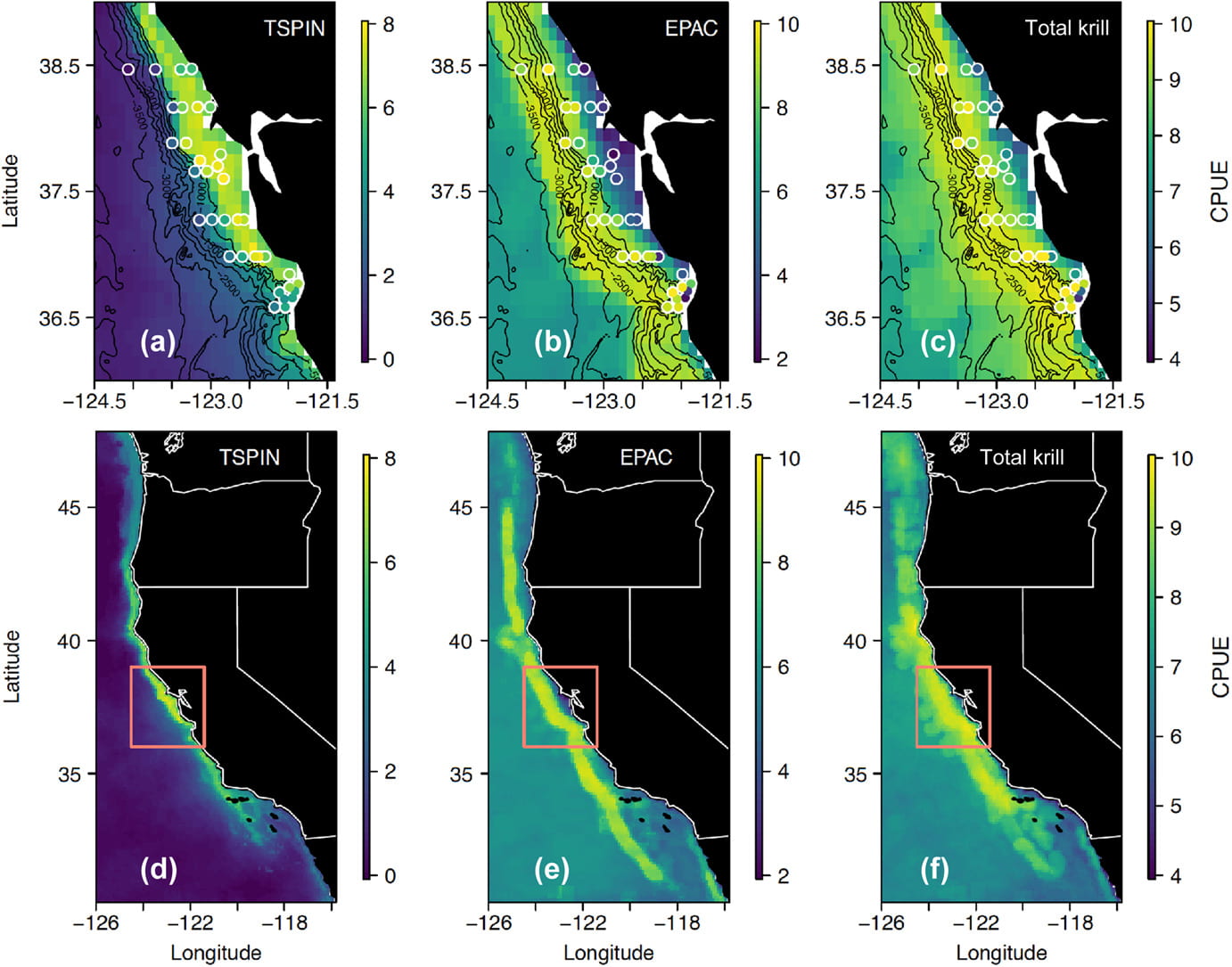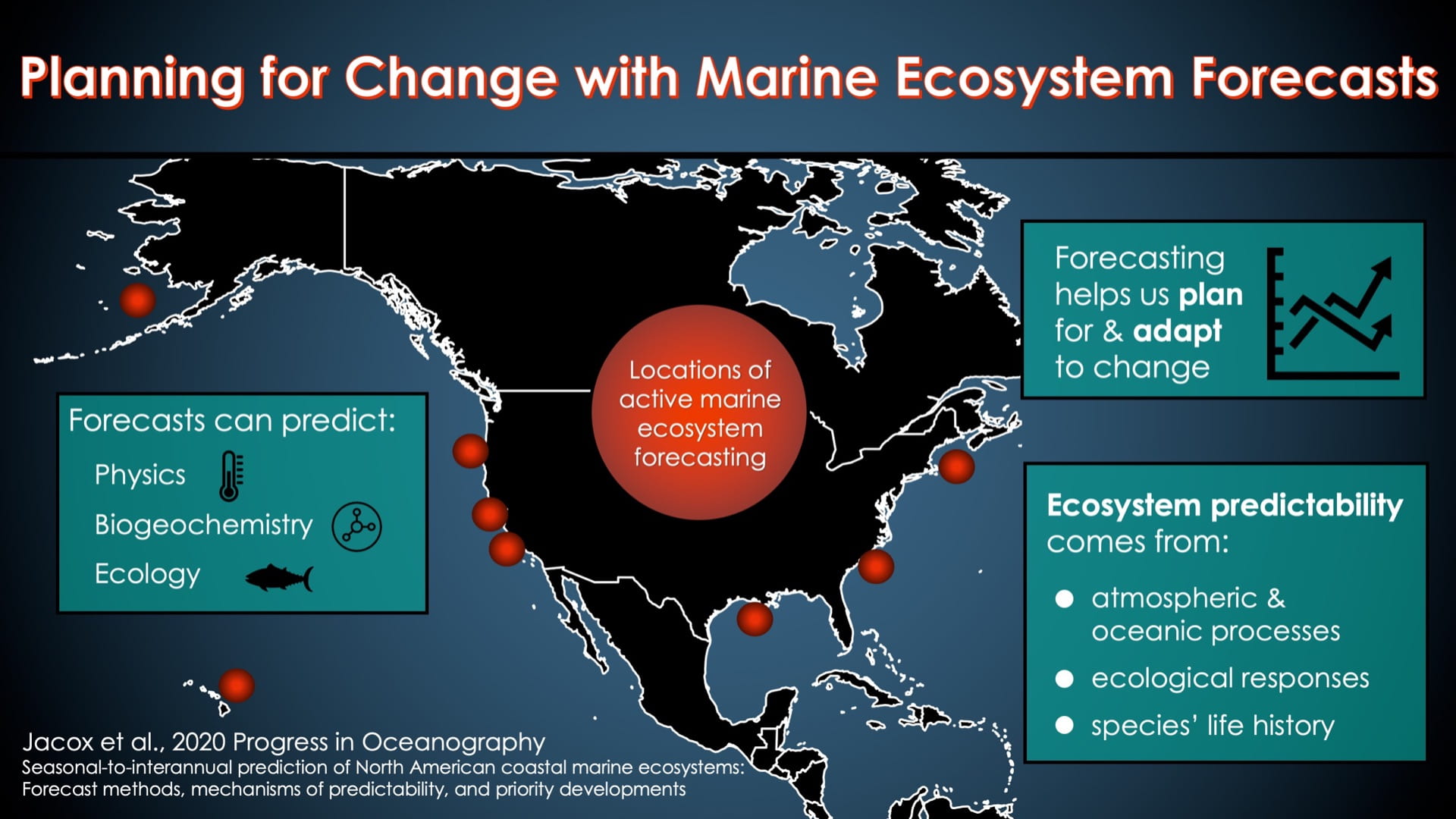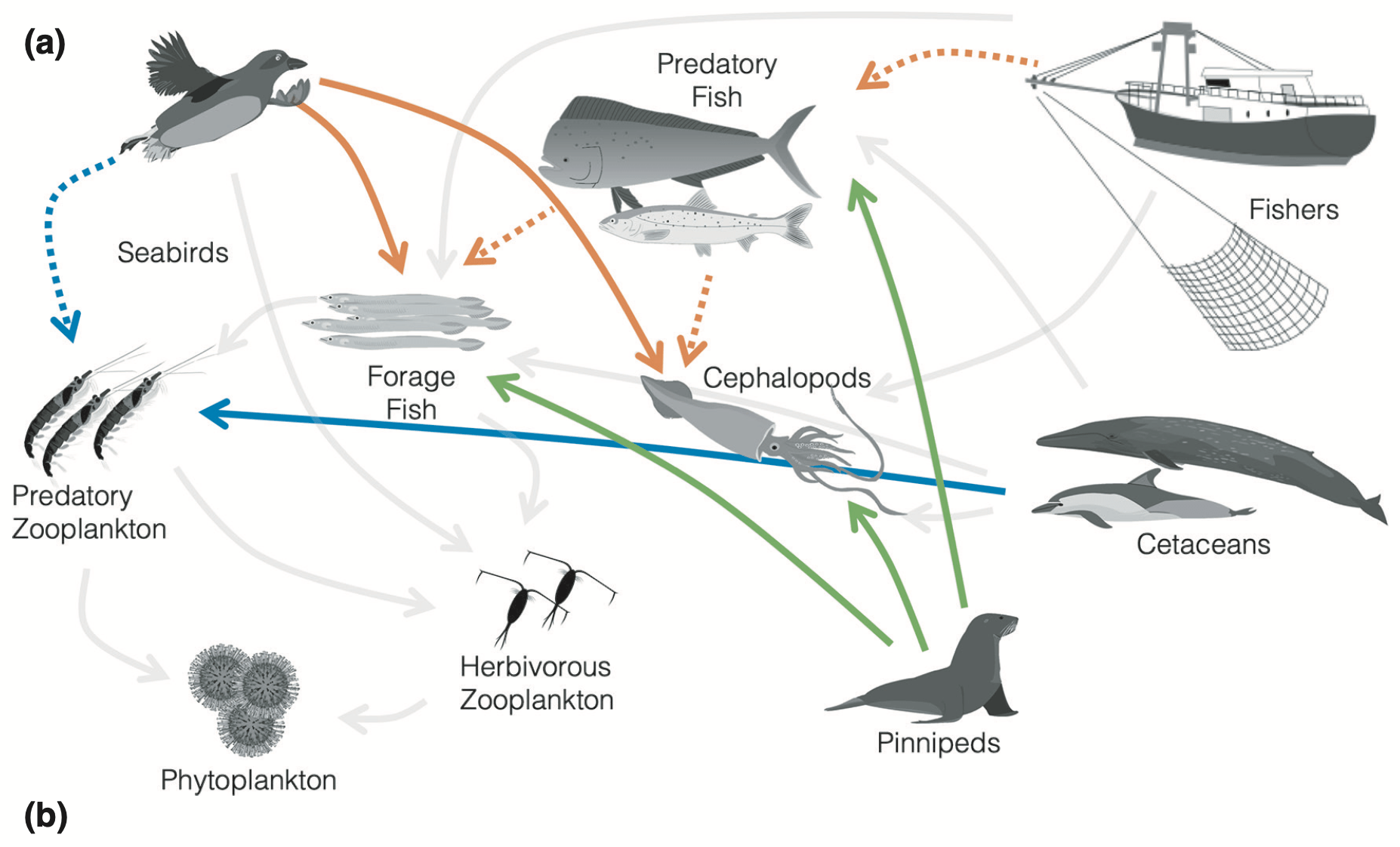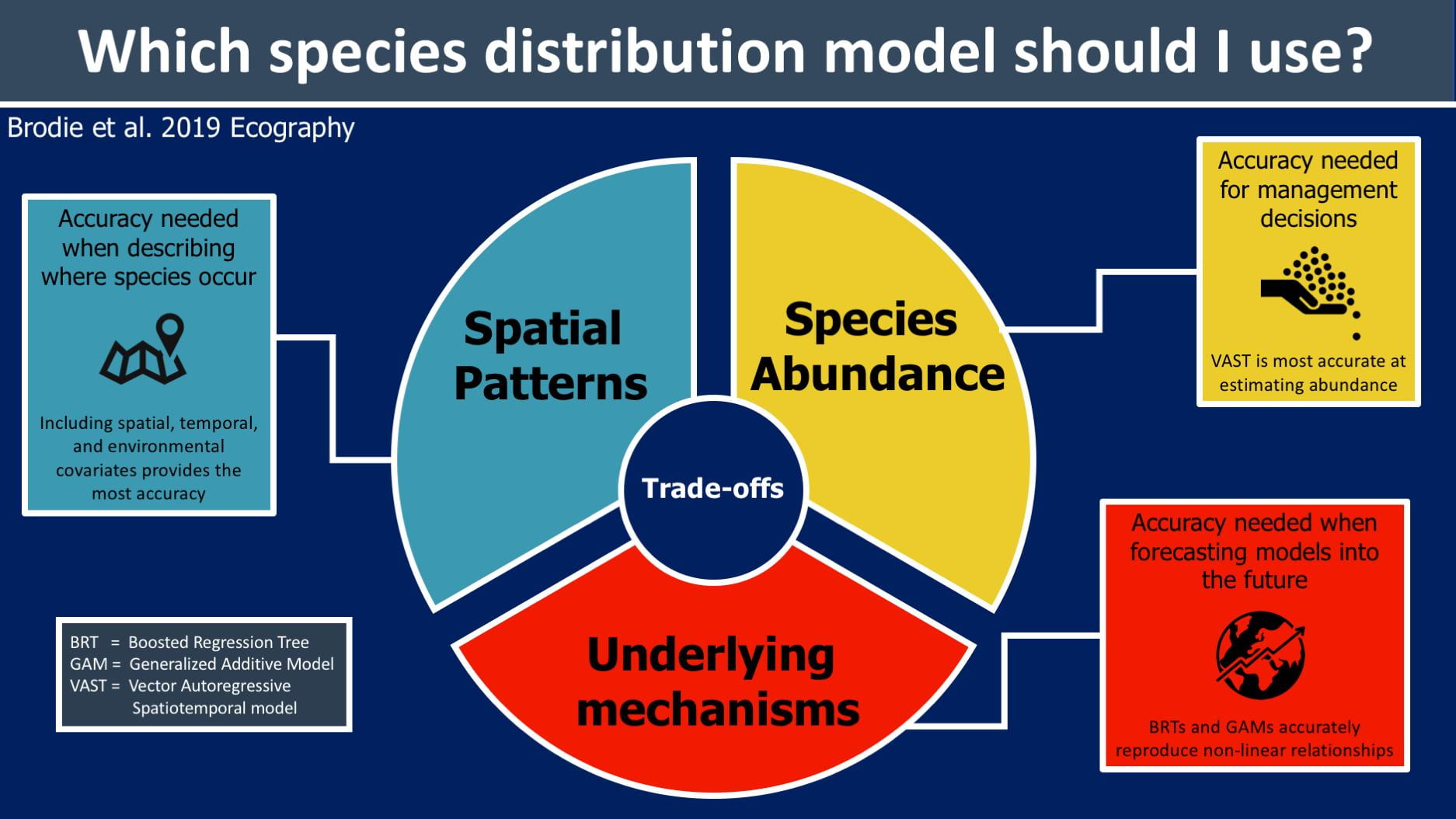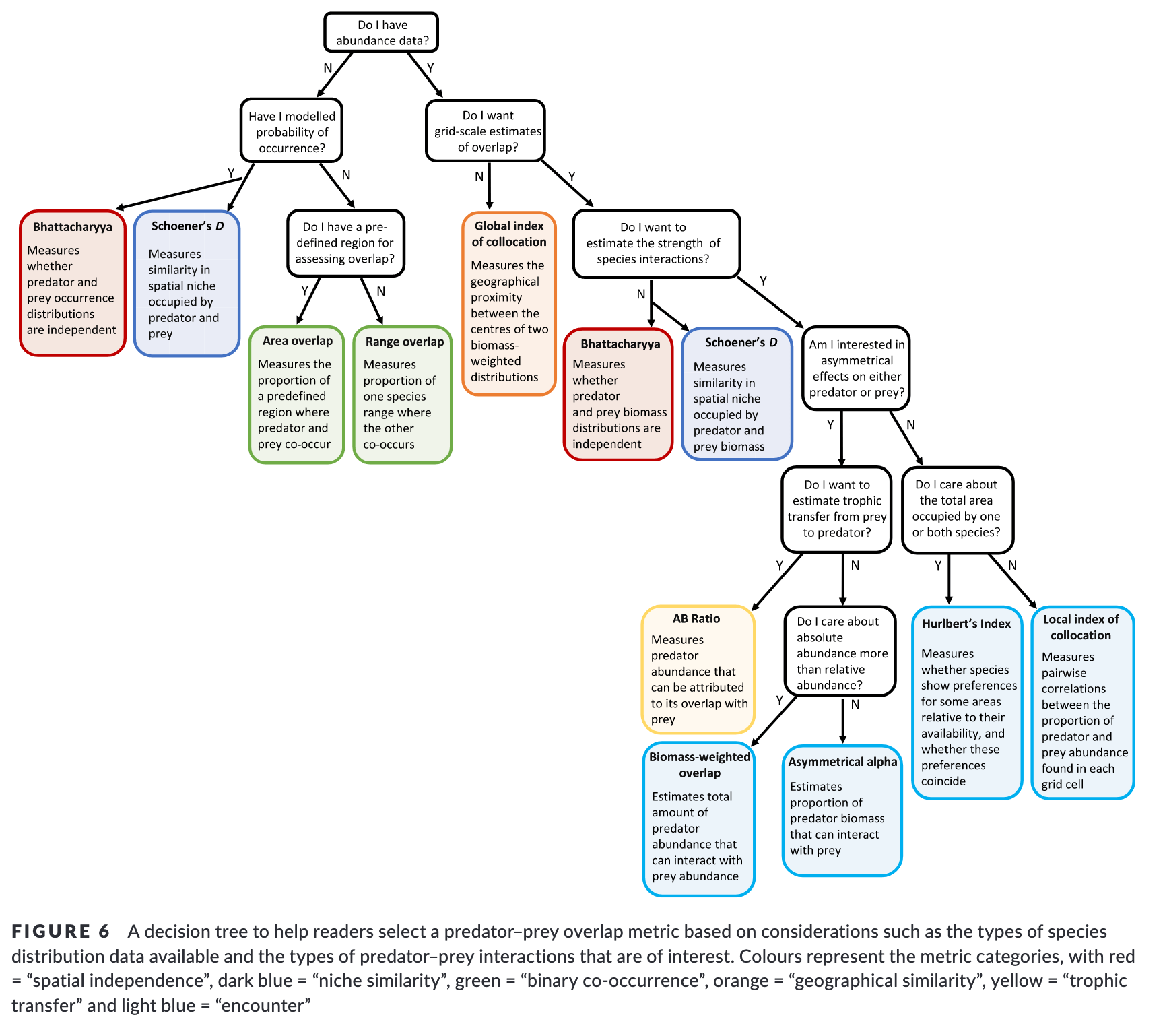Hannah Blondin published her first-year paper on how blue whale ship strike risk changes daily examining diel patterns in whale behavior and AIS data on the same scales. The coarser our resolution of analysis, the greater ship-strike risk. The graphical abstract below provides a good analysis of the findings!
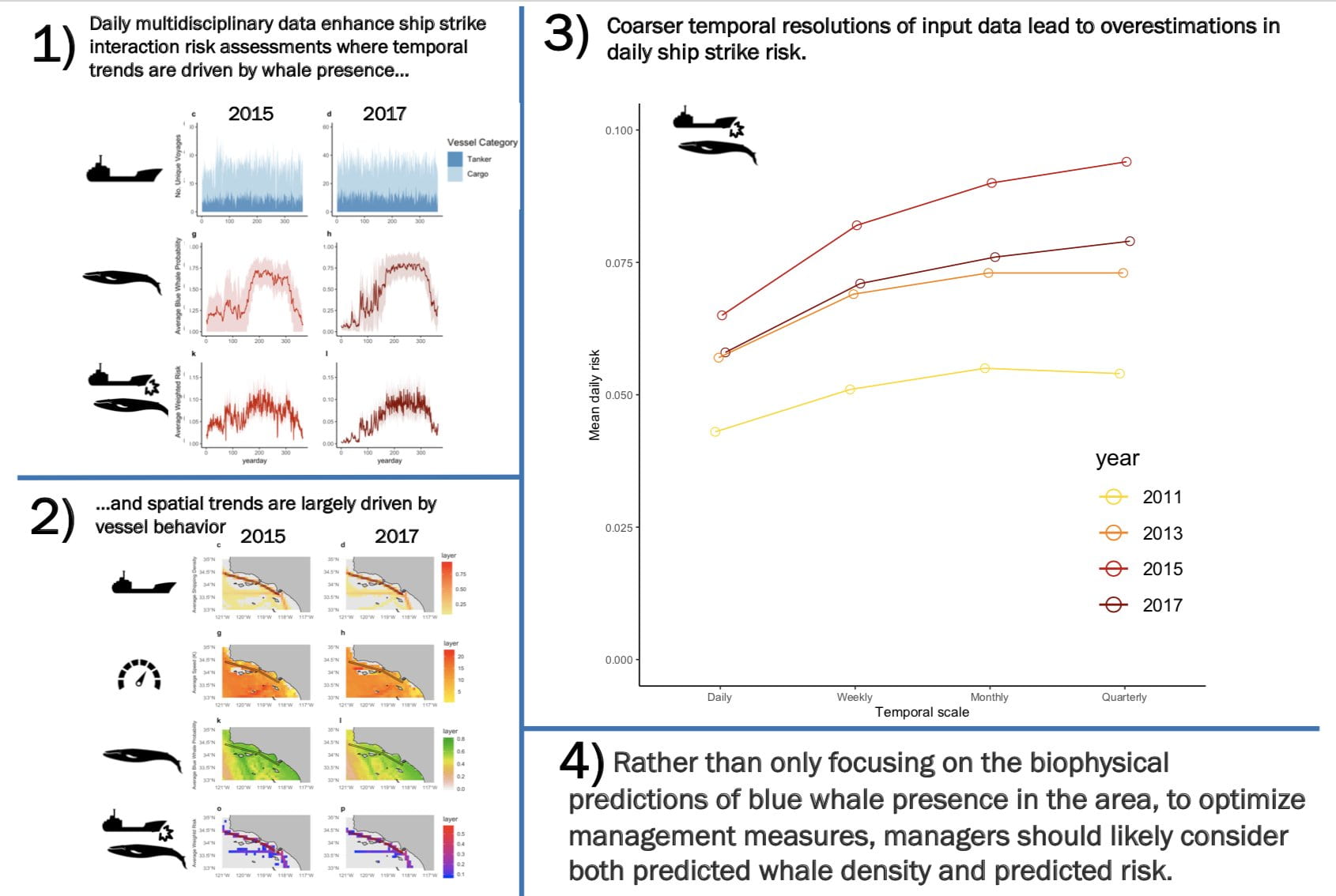
H. Blondin, B. Abrahms, L. Crowder, E.L. Hazen. 2020. Combining high temporal resolution blue whale distribution and vessel tracking data improves estimates of ship strike risk in the Southern California Bight. Biological Conservation. DOI: 10.1016/j.biocon.2020.108757. PDF



